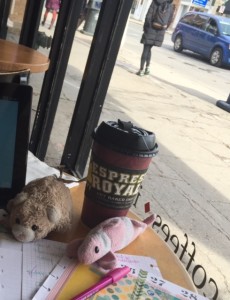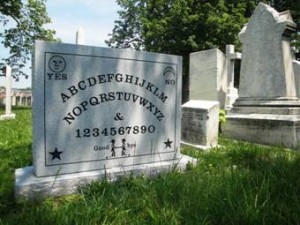Mature content. Saint’s mind moved at warp speed when he woke, then he recalled the night before, the body wrapped around him warm and silky, Sienna gave him a peace he’d never felt before now.
He remembered how she turned her back to him before she’d fallen asleep, something dark entering her eyes. Now she was wrapped around him, skin to skin from head to toe. He smiled. Saint had made Sienna come several times before he had taken his own pleasure. But he worried. Would she tell him what haunted her sleep? Was their relationship too new?
He closed his eyes and held her close for a second more. Saint was falling hard for this woman. But just when he wedged his foot between the door that she finally had opened, Sienna seemed ready to close it. After all the flowers and small notes, the phone calls and romantic words to show her how he felt, she still was reluctant to commit to a relationship. Maybe he was going too fast. Or, maybe he had to push harder. Did her ex’s betrayal destroy what trust she had left? He’d be damned if he would allow her to get swallowed up by that kind of thinking.
Inhaling deeply the sweet, musky scent of Sienna filled Saint’s nose. His need for her rose again, but he wasn’t going to disappoint the kids scheduled for their first lesson. He had to get moving otherwise he would be late.
Saint snuck out somehow without disrupting her. It made him smile. Her body told him what he needed to know, that he wasn’t making a mistake starting something with Sienna. But was she scared? He thought her reactions to what he wanted to give her was more than just a bad break-up with that jackass on her front lawn. No. There was something deeper under all that gorgeous skin. And Saint would figure it out.
At Paulson’s, Saint moved into his routine. He checked and double-checked all the equipment that his mechanics had laid out for his inspection and they moved out as a team to inspect the bikes themselves.
He smiled when the first students showed up with tired eyes. Smiles were joined by yawns as their excitement grew and they joined the fray. So, his focus turned to the riders, and how to get Sienna to understand that his interest in her was for the long haul. The thought lurked in the shadows of his mind. It was something he never wanted before her.
Saint lined up the students. As they got on their equipment, he noticed Danny. He wasn’t in the grandstand this time; he was at the fence adjacent to the starting line. Saint made an on the spot decision. He wouldn’t let Danny hang back. Saint walked over to have a word.
“Danny,” Saint said and nodded. He put his hands in his pocket.
“Saint,” Danny said, and Saint tried to hide his smile just in time to see Danny look up at him.
Danny wore a black eye.
Several choice words went through Saint’s mind for whoever had given it to him, but Saint wasn’t going to mention it. He didn’t want Danny to run again.
“You want to learn how to ride?” Saint asked through clenched teeth and pointed over his shoulders to the other kids waiting. “You’re what…about eleven?”
“No! I’m thirteen!” Saint couldn’t believe it. Thirteen? What the hell was his family feeding him? Did they feed him? Christ! He ran fingers through his hair. Saint needed to get the boy away from whoever was hurting him, and soon.
“Okay, Danny. Let’s get you some leathers and a helmet and you can join the class. We’ll get you up riding in no time,” Saint rolled his shoulders and neck to release the tension that squeezed his muscles tight after Danny’s approach. Saint relaxed his closed fists, finger by finger, feeling the crescent nail marks left behind on his palms.
Danny looked up at him. Saint ignored the fact that the boy’s lips trembled. “Really?”
“Yeah. You’ve been watching from the grand stand for a while now, maybe it’s time to get you in the classroom. It’s just a beginners’ class today. We won’t be riding, but you’re welcome to join us.” Saint would get them accustomed to a motorcycle, how it felt under them, and start teaching about all the parts and pieces. They would be in the classroom the second half of the day, which Saint knew they would groan about, but the riders needed to watch a few videos and go over some things in the textbook that they couldn’t learn on the blacktop. He waited for Danny’s answer.
“Okay,” Danny said and used his long sleeved shirt to wipe the wetness from his eyes, which Saint also ignored.
“Come on then.” They turned toward the garage. Saint would make sure the kid had a meal before he left. He said over his shoulder, “Alright guys, and girl,” he smirked at the lone girl whose eyes narrowed on him, reminding him of his sister when she was little. “Here’s your equipment list. Make sure you’ve got everything on, and it fits snug, especially your boots. I’ll be back in a few minutes.” Danny was eager to get started, Saint could tell, and neither one spoke as he got ready.
“Stand beside Tina, Danny, and we’ll get started.” Saint got right to it when he returned with Danny. Saint looked to all the eager faces–those faces he could see, since some had their helmets on, even Danny–in leather tops and bottoms. He wanted to laugh, but kept it in.
Danny looked up at Saint and crossed his arms, but dropped them just as quickly. When he got close to Tina and gave her a wide birth, Saint frowned. He watched her say hi, and Danny looked like he said something back, but it was tough to tell.
“Let’s get started.”
*****
“I think I’m falling in love with him, Megs” Sienna told her best friend over a lunch of sushi and lotus blossom martinis. “And I’m more afraid than I’ve ever been.”
Megan gave her a wink and lifted her glass. “Now that’s a problem worth toasting.” The two women were on their second drink and, after last night, Sienna was already feeling light headed.
With another sip Sienna laughed along with Megs, at first, but then her smile faded and she said, “What if I give him my heart and he throws it away?” Sienna shook her head and tried to hold back her tears. “I’ll go straight off the rails.” She took a healthy sip and shuddered, thinking about what they’d shared last night. “I know I will.” She never got shivers thinking about Layton, or the other two before him.
“You’re talking like it’s already happened. Why? What did that bastard say to you? Did he tell you he loves you?”
“No.” She turned the martini glass around watching the flower slowly be consumed by the vodka. “But the way he looks at me, touches me…I know there’s something deeper between us than I’ve ever experienced.” Sienna tried to hold her breath but the subtle shiver would not subside. The thought of being with him again made her insides go all fluttery.
“Look, baby cakes, you need to find out if this guy is for real, and you need to find out fast. You’re not a goodtime girl, and I’m not going to let some bastard that you just met hurt my best friend.” She turned to the waiter and said, “Two more, please.” Then she turned back. “Here’s what you’re going to do.”
*****
Saint was pleased with everyone in the class by the time the sun started to fade for the day. Danny, whom he was worried would feel uncomfortable around all the other kids, some from his school that stared at him more than not, got through the class like it was second nature. He couldn’t wait to get Danny riding a bike of his own.
Saint walked into the equipment room and saw Danny putting some gear away. Some of the other students left right after they put the bikes away. Saint watched him work. He was meticulous, almost compulsive. Saint ran his fingers through his hair and eased out a silent breath. Danny looked even skinnier from behind. It would be to his advantage on a bike though, his small size, and if the kid’s coordination was tight… But Saint worried Danny wasn’t healthy. “You hungry,” he asked a couple feet behind Danny.
Danny hunched his shoulders and turned fast with his fists at the ready, but dropped them just as quickly.
“Hold up champ.” Danny’s whole body seemed to deflate. “You okay?” Saint asked. He wasn’t going to stay quiet this time. But he wouldn’t start by asking him who hit him. Danny nodded once. “Come on.” Saint moved to another door. Danny hadn’t moved. “You coming?” Saint turned around and faced him, waited, his hands in his pockets. He looked right into the boy’s eyes and said, “I would never hurt you, Danny.” Saint waited never taking his eyes off Danny.
Danny must have seen something in his stare because the boy moved and stopped right next to him. When he looked up at Saint, Danny’s chin was up, and his lips pinched together, and he showed his pride through the directness of his eyes, and managed to say, “Okay.”
“Okay.” Saint opened the door next to his office where stairs of metal and wood led up to his flat. He’d converted it just like everything else at the Speedway, but getting to this part took a bit longer, and he needed to be in the black longer than he’d been in the red, so it had taken some time. “I hope you like sandwiches, cause that’s all I’ve got.”
“Yeah, I like sandwiches.”
They reached the kitchen, and Saint smiled as Danny’s mouth fell open. His flat was big, opening up in the kitchen and spreading out across the entirety of the garage and offices below. The surfaces were all distressed recycled wood, metal, and glass, plus a man could sink into his sofa and sleep for days.
“Wow!”
“What do you like on your sandwich?” Saint pulled out ham, beef, Swiss cheese, salami and started to pull together a sub that could solve world hunger it was so big. He grabbed some bread for Danny. “You want to make your own?”
“Yeah, sure.”
When he looked down at Danny’s sandwich he said, “You sure you got enough there?” and laughed. The sandwich was bigger than his. But when he saw Danny’s shoulders slump and his arms fall he wished he’d held the words back.
“Let me get a knife and cut it in half.” When he plated it and put on the burnished metal island, Saint had to tell Danny to sit down. “Sit. Eat.” The kid didn’t move. “Go ahead and sit down. You want a pop?” He went to the refrigerator. “I got Coke, Pepsi, and Sprite.”
“Pepsi, please,” he said into his plate as he sat.
Damn he looked small compared to the other boys in class today. Danny needed to eat, but he didn’t pick up his sandwich. Saint went and sat next to him and started to eat his own. Finally, after Saint was already halfway through his, Danny picked up his sandwich and took a bite. He inhaled it, for the most part after that, starved as Saint came to understand.
“You have enough?”
Danny answered by nodding as he gulped down the rest of his drink. When they finished, Saint cleaned up and turned toward his new charge. And he would be his new charge. The more he could get him to hang around, the safer he would be, plus the more he would learn. Because one thing he knew, Danny was starved for attention that wasn’t followed by a fist, and he was hungry to know about racing. Saint was anxious to resolve both issues. He was just about to tell him that when a knock came at his door. Thinking it was one of his mechanics he told Danny to go clean up, and he would take him home. The kids face fell, but Saint knew it was too soon to ask him to stick around longer. There was nothing else he could do. Legally. Yet. Saint rubbed his hands over his face. He would figure some way to help. He just needed to apply a little creative thinking.
Saint opened his door, and his arms were comfortably filled with a warm and soft… “Sienna!”
Sienna’s lips slammed against his, her aggression surprising him. When she nipped his lips and pressed in hard with her tongue he couldn’t help but open up to her. Her arms came around his neck, her hips became flush with his rising arousal, and she ground her hips against his. What was going on here? He enjoyed her, but this just felt all wrong.
Saint watched her eyes lock closed and her brows draw down like she was in pain. His mind reeled. He pulled her off him holding her at arm’s length to figure out what the hell was going on with her. Her lips came away puffy, parted, and red as she tried to press against him again. Her eyes flickered open and blinked.
She blinked again, “Why’d you stop? I thought you wanted this.” She tried to press into him again. He gripped her harder, and she pushed back with enough force that his feet shifted backward. He didn’t want to hurt her, but he held her arms with a firm grip, not letting her move away which she now tried to do.
“Sienna. Stop!” he said a little louder than he wanted to.
“It was good last night,” she snapped. “Don’t you want more of that, more of me.”
“Yes,” he said and was once again moved. His back hit the wall, and he grunted in pain. He was caught off guard. “Sienna, stop!”
“Ahhh!”
Saint’s entire body jerked, as small hands tore Sienna from his grip. He watched her body slam up against the door. “He said stop! Leave him alone.”
“Danny! Stop!” Saint yelled, stunned at what he witnessed.
Saint tried to jump into the fray and pry Danny off Sienna, but Danny wouldn’t respond. Saint didn’t want to hurt him either. He reached for him again.
His small fists were a blur of fury. Sienna’s hands blocked her face. They moved a second later, but to slowly, and a blow darted across her ribs. She moaned. Saint grabbed Danny. The kid wriggled like a cornered wildcat with more strength than a boy twice his size. He pulled him off Sienna just as his hand passed an inch away from her face. She fell into the door and sank to the ground. Danny screamed and raged at Sienna. Saint wrapped his arms around the boy and locked him in his grip, not enough to hurt. He looked up to see if Sienna was okay.
Sienna’s shook her head. Her hand covered her mouth as tears streamed down her face. She caught Saint’s look and then looked back to Danny. She went to reach out as if to tell Danny it would be okay, but Danny started to shake as soon as her hand started to move.
Danny’s limbs quaked like he’d never been still before, violent tremors like his body was about to crack apart.
Saint had had enough and picked the kid up. It was awkward. He had to get Danny to calm down.
Sienna followed, but she was smart enough to stay out of Danny’s sight.
Saint eased him down on the couch and moved to sit next to him, but didn’t let go. Some of the shakes lessened, and he finally let him go but stayed close with one hand clamped down on his ankle.
“Danny,” he sighed and closed his eyes for patience. Looking back at the boy he said, “Can you look at me please.” Minutes passed. Saint waited. Danny eventually did what Saint asked, but it took everything in Saint to stay calm after the kid attacked Sienna. He looked up at her and then back at Danny. “Want to tell me what the hell just happened?”
He said nothing and curled into a protective ball into the cushions in the corner of the couch.
“Danny, listen to me. Look at me,” he snapped. Danny’s eyes came to his. “Sienna wasn’t hurting me. We just had a misunderstanding.”
“No. No. She was hurting you. She pushed you and…and…” His voice died, and he looked down.
“Danny, please look at me.” When Danny looked up, his stare was haunted, and made worse by the tears that spilled from his swollen eye, now more prominent than ever, Saint had to ask, “Who hit you, Danny?” If the boy could have gotten even smaller, he would have. “Danny, please tell me who hit you.”
Dread filled the room, it an oozing darkness that lingered around everything that had been said. Sainted waited. He wasn’t going to let Danny leave his place until he knew.
“My mother.”
“No!” Whispered across the floor like a physical blow from where Sienna sat. Danny’s body jerked to the sound. Saint turned. Sienna’s eyes focused on something only she could see as mascara stained her cheeks.








